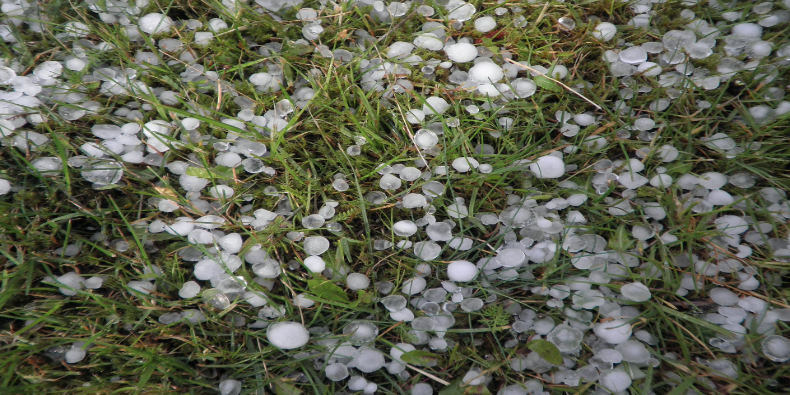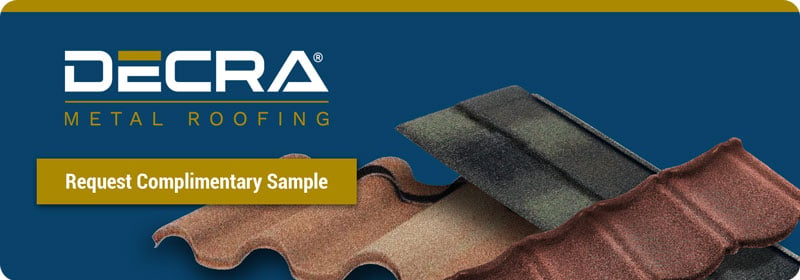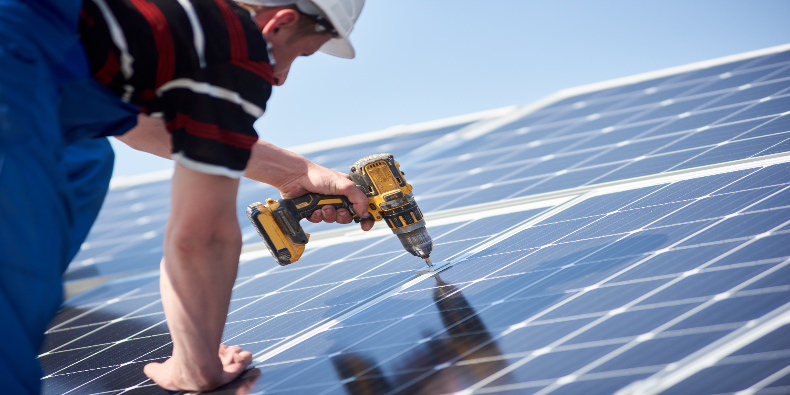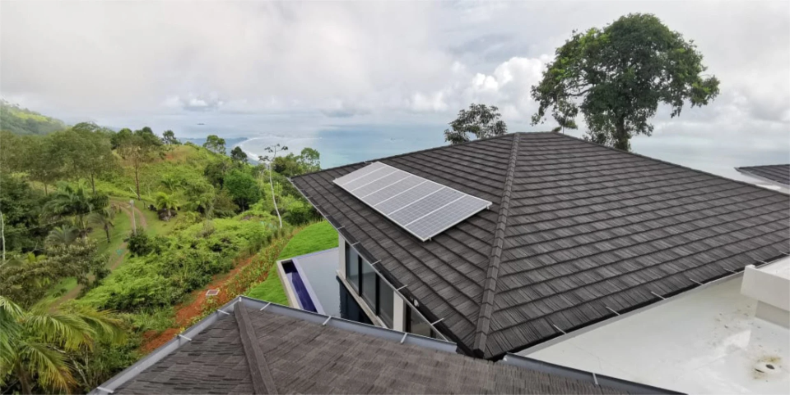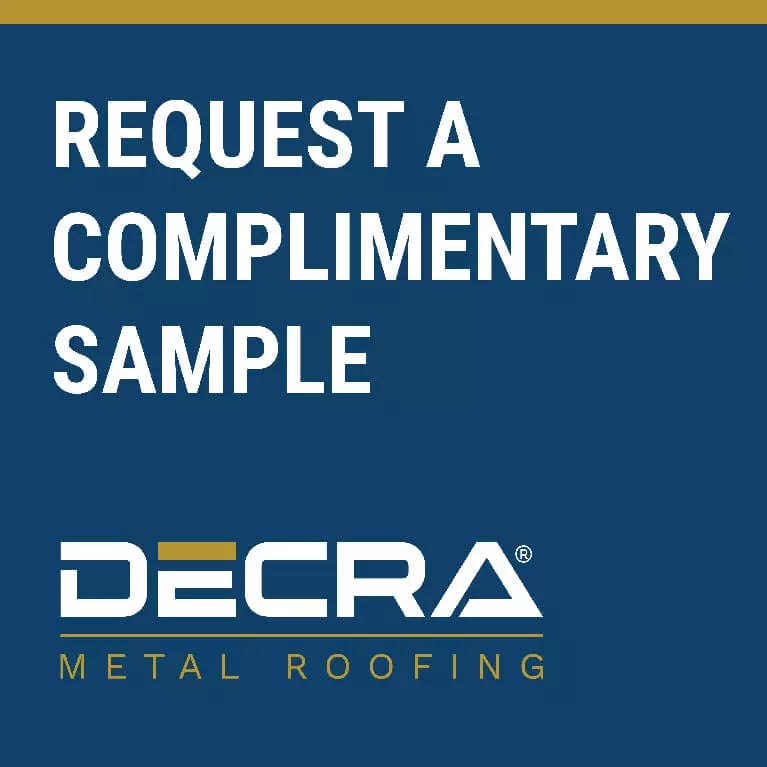Hailstorms are a common weather phenomenon across the entire United States. Hail frequently occurs with thunderstorms when rain moves upward into colder layers of air. Often more rain will build on small hailstones, making them larger, similar to rolling a ball of snow to make a snowman. When hail becomes too heavy to be supported by the storm’s updraft, the hailstones fall to the ground, causing damage to plants, cars, and homes.
Damage from hail prompts many homeowners to replace their roofs. If you’re looking for a roof that’s particularly strong against hail, you might have heard about hail ratings. But what do they mean? Understanding hail resistance can be confusing.
We created this blog to help homeowners find the best roof to resist hail. In it, we explain:
- Why hail resistance should be a key factor in choosing a new roof
- How hail ratings work and why a Class 4 rating is the gold standard
- What other factors to look for alongside superior hail resistance
If you’re investing in a high-quality roof, you can get more than the best possible hail resistance if you know what else to look for. Use this guide as a checklist, and you’ll not only get a roof that stands up to hail but one that brings many other advantages as well.
Why Hail Resistance Is So Important
Often, homeowners don’t know the effect of hail on their roof until it’s too late. It can cause pitting, cracking, chipping, and warping of roof material. The longer the roof goes unrepaired, the more vulnerable it becomes to future weather damage, including leaks.
Hail impact on a roof can result in insurance claims amounting to thousands of dollars. Last year, Texas, Kansas, Missouri, Nebraska, and Oklahoma had the highest number of hail events, according to the Insurance Information Institute. But Minnesota and Illinois were also among the states with the highest number of insurance claims for hail. Even places like Southern California saw hail in 2025, with residents in the San Diego area reporting hail larger than peas hitting their properties.
A Class 4 Hail Rating Is the Best
While it’s always smart to check your roof for damage after a hailstorm, your best defense as a homeowner is to have a roof that resists hail and similar types of impact. For this reason, roofing is given ratings by Underwriters Laboratories (UL), an independent organization whose name you’ve no doubt seen on many consumer products. Their UL2218 Impact Rating test is considered the gold standard nationally for a roof’s integrity against hail.
To approximate the conditions of a hailstorm, steel balls are dropped on roofing material from a variety of heights. Steel is used because it best mimics the density and hard outer surface of hail, versus something like a baseball, which has more cushioning and distributes its impact force over a larger area.
The material is then given a rating from Class 1 to Class 4, with the latter being the highest and best able to withstand hail impact. A Class 4 roof will not have any penetration or fracture even if a 2-inch steel ball is dropped on it from 20 feet above.

Some roofing manufacturers also perform their own tests to higher standards. They may warranty their material against even larger hailstones, in addition to carrying the Class 4 UL rating.
What Else to Look for in a High-Quality Roof
Hail isn’t the only weather threat to properties these days. If you’re seeking a roof that resists hail, it’s the perfect time to evaluate roofing material for other characteristics. Broad weather resistance is one, but you may also find certain materials offer greater financial benefits and convenience. Some may even align better with your commitment to more eco-friendly building practices.
Wind Resistance
Hail often accompanies high winds, which can also crop up with routine summer storms, blizzards, tornadoes, and hurricanes. Dust devils—like mini tornadoes—can also produce devastating winds, strong enough to cause roof damage and send debris flying.
Every homeowner should look for a roof with outstanding wind resistance. But if you live in a region prone to tornadoes or hurricanes, it’s even more vital. A roof that can stand up to hurricane-force winds similar to those found in South Florida is best.
Top Fire Rating
Increasing temperatures, longer summers, and drought conditions have all contributed to an uptick in wildfires. Although the Southwest typically gets the most press for these incidents, other areas have recently seen brush fires too, including the Northeast.
Some roofing materials, such as wood shakes, are absolutely not appropriate or outright banned in high-risk fire zones. Metal roofing is a better choice all around, as it’s noncombustible. Even better, a Class A Fire Rating from UL will ensure your roof stays in place and doesn’t ignite in fires originating outside the home.
Ability to Handle Temperature Extremes
Summer scorchers and bitter winter sub-zero temperatures seem to be the norm lately, often within the same area. A roof that can remain at a more stable temperature at either end of the mercury is best.
The right metal roofing, for instance, will reflect rather than absorb the sun’s rays in summer, especially if it has an exterior stone coating. This helps lower warm weather cooling costs by up to 25% for homeowners.
Similarly, a roof that doesn’t succumb to freeze-melt cycles in winter will reduce the likelihood of ice dams forming. And if you get heavy snowfalls, you want a roof that’s both sturdy and lightweight to prevent sagging.
Longevity
A roof remodel is a major undertaking. Wouldn’t it be nice if you only had to do it once in your home’s lifetime?
That’s possible if you choose metal roofing over conventional choices like asphalt shingles, clay tiles, or wood shakes. It lasts two to three times longer than the others, giving you 40 to 70 years of protection.
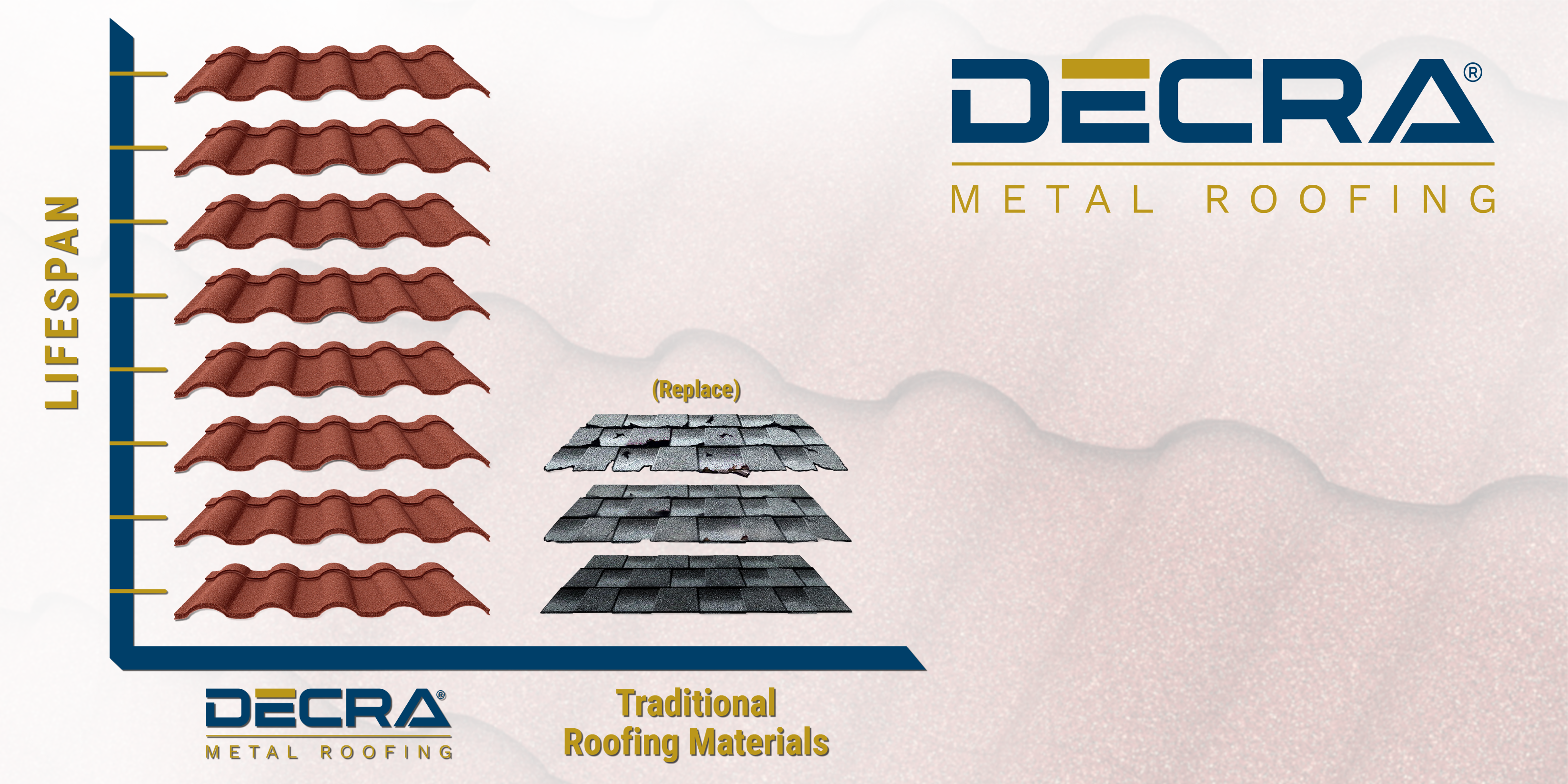
Value for Investment
Remodeling your roof is also an investment. You want to recoup the cost of the job, and you want to see that investment reflected in your home’s value.
Metal roofing is the winner here again. It can boost your home’s equity or selling price by up to 6%, which is huge, whether you want to stay in the home long term or list it soon.
Insurance Benefits
Insurance companies are getting pickier and pickier about homeowners’ roofing choices. They’re resorting to drone inspections to see which properties are at risk of roof claims.
How can you reduce the risk of having your premium raised or your coverage dropped, while maybe even getting an insurance discount?
- Inspect your roof regularly for damage and debris.
- Keep your roof in good condition at all times by doing timely cleaning and repairs.
- Choose a roofing material that’s preferred by carriers, like metal roofing.
- Check that your roofing has a Class 4 impact rating for the best results.
- Make sure your new roof is properly installed by a qualified contractor.
Low Maintenance
Unless you like cleaning and scraping your roof all the time, steer clear of cheap asphalt shingles and wood shakes that attract mold, mushrooms, and the like. Opt for easy-to-maintain roofing that resists growth, rust, and oxidation.
Lifetime Warranty
Your new roof should come with a solid warranty against damage if it is properly installed and maintained. The best warranties can be transferred to a new owner if the property is sold.
Sustainability
Some types of roofs, like wood shakes and metal roofing, can be recycled. But most asphalt shingles wind up in landfills and can never fully decompose. As petroleum products, they only add unwanted chemicals to the earth as they break down. So, if you place a premium on sustainable roofing, look for roofing material that is more environmentally friendly. (Pro tip: sustainability might also include the ability to hold solar panels.)
See Hail-Resistant DECRA Roofing on Your Home
There’s one type of roofing that ticks every box on the checklist above, including Class 4 hail resistance: DECRA stone-coated metal roofing. And it is available in a wide range of hues and profiles that look just like shakes, shingles, and tiles to match any home. After all, most homeowners would add curb appeal to the list of what to look for in a roof!
Planning your next roof remodel? Take a moment to see what DECRA roofing would look like on your property. Just try our online visualization tool. You’ll be one step closer to choosing the right hail-resistant roofing that also gives you excellent weather protection and multiple other benefits.
Editor’s Note: This blog was originally published in December, 2023 but has been updated with relevant information.

